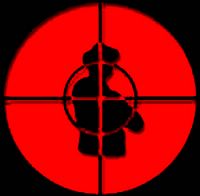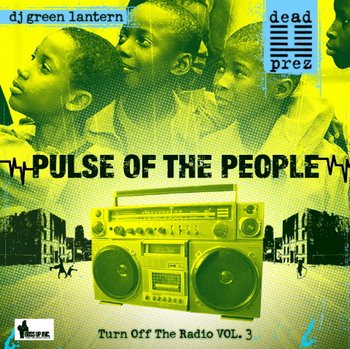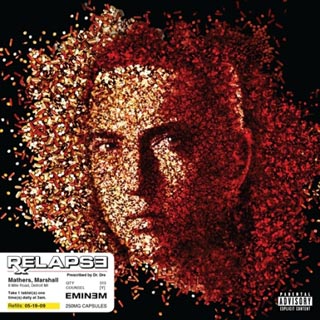Culture is something we interact with on a daily basis, and it affects everything we do as well as how we think. Yet it's something most people in u.s. society pay no mind to, or do not think deeply and critically about. Culture is a very powerful instrument of the state. Like a gun, culture can be used for bad, destructive purposes, or for good, liberating purposes.
Culture is something learned in a society. We are not born understanding culture. So just as people and a society can change, so can a culture change. When culture is passed from child to child, or from elderly to children, generation to generation, this is called "enculturation." When someone is "enculturated" it means they learn what is funny in society, what is offensive, when to eat, when to sleep, why to get angry and why to be content. All this stuff we learned through "culture." Everything, like how to sleep, what to struggle for, how to sexually satisfy, all of it is determined by culture. We have learned this stuff as a child. We observe and see what is socially acceptable in this society and at times we learn some of this culture in public schools where the teachers "enculturate" us.
In a society, a culture must determine its food, shelter, laws, education and the arts, as well as the production relations. Here in America the culture is a capitalist culture so everything is based around the profit system. Whether the people go without, suffer or are exploited is beside the point. We learn from public school that America is a liberator (which is bullshit), but we do learn this. We learn that all are equal (except those we call terrorists). We learn all this patriotism about BBQing on the 4th of July, making a turkey on thanksgiving, and adding to the economic stimulus every X-mas by making sure we run down to the mall and purchase lots of merchandise for "X-mas presents." All this is part of capitalist culture in the U.S.
It is so saturated by corporations that even the people are corporate billboards, walking advertisements for corporations. Look on any street or in any public school, and you'll see people wearing shirts with the words "nike," "adidas" "tommy hilfiger," and all the corporate sports teams. This is basically millions of flying billboards where the people are used to advertise products without even realizing it themselves. Even the movies we see coming out are patriotic and glorify the dollar and luxurious living. Music is the same and rap music in particular, for the most part is talking about bling bling and everything revolving around that lifestyle. U.S. society is so saturated with capitalist culture that the vast majority can't even comprehend any kind of culture that is based on the peoples' interests. Most of the U.S. population has never studied revolutionary culture or seen how culture is a tool to direct society, so it is completely outside of their comprehension.
Looking at what shapes culture today particularly in the oppressed nations communities in the U.S. is most definitely the hip hop movement. Rap music is a vital element for young people today in shaping their culture. We saw back in the late 70s when hip hop had kids all across the U.S. walking the streets with boombox radios, in sweatsuits, breakdancing and popping and locking. This cultural phenomenon spread from the ghettos to the suburbs. In the 1980s when Eazy E and NWA came out, people across the U.S. started doing drive-by shootings and drinking Old English 40 ouncers. So this too had a big affect on how kids were acting and the things they were doing in society.
The 1990s saw in the beginning years of hip hop a lot of talk of dope and money, pimping, etc. But toward the end of the 90s, 2pac started bringing a slightly different vibe to music. A more revolutionary scant to his music began developing, and then he was assassinated. So the 2000s came and it's more "bling bling or die trying bling bling" type of music in the hip hop arena. And so kids across the U.S. are once more affected by having gold and diamond encrusted mouths, and driving SUVs with tens of thousands of dollars worth of stereo equipment and accessories. This is the current culture of U.S. society when it comes to hip hop today. Of course there are a small handful of rappers who put out a more progressive form of rap like Dead Prez, Paris, The Coup, etc. But most people haven't heard of these groups because they are not getting the Madison Avenue advertisement contracts and are not getting signed to major record labels that are more corporate-friendly. So a progressive or revolutionary rapper may be from California and have been rapping and selling CDs and tapes since the 80s, yet someone living in Detroit never heard of them.
What makes hip hop so powerful is it attracts so many young people, worldwide. It is thus a vehicle for revolutionary culture and building public opinion. But this is something that not only revolutionaries have noticed. The imperialists are also aware of this. Anything that can potentially threaten capitalist society will be monitored and by any means manipulated.
I just finished reading this book called "Malcolm X: The FBI Files." It was basically a chronology of Malcolm X's life, but the most interesting part of the book, after reading about "white devil" this and "white devil" that, was how the feds sought any Black leaders and written in the feds internal memos, would be things like "do not allow a charismatic leader to unite Blacks, use manipulation, disinformation" etc. So basically this applies to all oppressed nations people: should the people begin to unite or organize, the state would target us for the purpose of destroying whatever we have going. In this book it also had a designation term called a "key figure." Once they designated a person as a "key figure" not long later that person was assassinated. In the book the "memos" on Martin Luther King designated him as a key figure, and soon after he was dead. Malcolm X was designated a key figure and soon after that he was dead. When these memos spoke of a key figure and said it was one who could "electrify" his people and unite them; someone who has an overwhelming influence on the community.
Looking at hip hop again in a new light, we can see how hip hop can indeed "electrify" the people and unite different levels of society. We had a 2pac who practically every kid in the U.S. listened to, and who influenced all these people in the U.S. As he began to become more politically conscious in his music, waking up even suburban kids to some of our political prisoners, I could imagine thousands of white suburban kids at the dinner table after listening to Pac ask their parent, who may be in law enforcement, or even a fed, "what's a political prisoner?" We can see how the state can see someone like 2pac as a possible rising figure a vehicle to help build revolution in the U.S. We can also see how if someone in the hip hop community like 2pac took on a real revolutionary stance in his music, it could have made millions conscious of what this country is really about. Public opinion would have received a major thrust forward. This could have changed hip hop culture into revolutionary hip hop where all major rappers began to speak reality, opening up more minds to real struggle. The possibilities are endless. Hip hop plays a major role here in the U.S., as the youth, the oppressed nations, and the lumpen will be the backbone of the revolution in this country.
To get an idea of what revolutionary culture would look like one need only look to China under Mao, 1949-1976. In Chairman Mao's Peoples Republic, China underwent dramatic change from and in all areas of life. China's past was one like most third world countries, where exploitation was considered the norm, peasants were worked to death by the greedy landowners, children were sold to pay off debts, prostitution ran wild, opium was as common as cigarettes are today, women were property, illiteracy was the norm if you weren't wealthy... Basically the majority was ruled and exploited by the few.
When the revolution came, Chinese society was transformed. All areas of life, entertainment (culture), were now in the interest of the people. The peasants no longer toiled the fields for 18 hours, or in some cases 20 hours a day, to pay off a debt to the landlord. Now peasants worked half days in the land they were given, or in the collective farm, and the rest of their day they went to school to learn to read, write and discuss revolutionary theory. Thousands of teachers and doctors from the cities volunteered to go out to the country or the mountains where the peasants had never seen a teacher or a doctor. They did this not for better pay or a nicer neighborhood. Instead they did it to help, or as Maoists say, serve the people. The ballet and opera no longer showed plays of a capitalist nature. Now the ballet and opera showed plays of the people struggling for revolution. In the school children no longer learned poison, as today's U.S. children learn: that murderers, rapists, and genocidal psychotics like Christopher Columbus, Hernan Cortez, or Amerigo Vespucci were American heroes.
Instead, in Mao's China, children learned who the exploiters were and who were the real peoples' heroes, as well as the many revolutionary leaders worldwide, and political theory. Unlike in U.S. prisons where every prison cellblock has 30 bibles in the dayroom or half the prison yard is christian or muslim, and religious chaplains make their rounds door to door, in Mao's China every prison cell had a stack of revolutionary books of leading theoreticians so that prisoners could learn of many struggles taking place all over the world. This was provided by the revolutionary government. Every day prisoners were allowed to participate in a large study group where they would discuss what they were reading and grapple with theory. Even in the factories the workers would take breaks to rest and discuss political theory in groups. Women with children were provided collective childcare in their neighborhood free of charge so they would work half day and partake in study the other half to contribute to the revolution. This was the environment in Mao's China, and this is the revolutionary culture we can look forward to. In revolutionary culture everything is done to advance the revolution. In this type of environment the people will give their all as they know their comrades right beside them are doing the same, not for personal gain or money but for the people.
Today's culture in the U.S. is all about money and everything is done with personal gain as motivation. So a revolutionary culture in this country would reverse all of this and every sphere of society would be contributing to the people. En la lucha.






 Alabama
Alabama
 Alaska
Alaska
 Arizona
Arizona
 Arkansas
Arkansas
 Army Post
Army Post
 California
California
 Colorado
Colorado
 Connecticut
Connecticut
 Delaware
Delaware
 District of Columbia
District of Columbia
 Federal
Federal
 Florida
Florida
 Georgia
Georgia
 Guam
Guam
 Hawaii
Hawaii
 Idaho
Idaho
 Illinois
Illinois
 Indiana
Indiana
 Iowa
Iowa
 Kansas
Kansas
 Kentucky
Kentucky
 Louisiana
Louisiana
 Maine
Maine
 Maryland
Maryland
 Massachusetts
Massachusetts
 Michigan
Michigan
 Minnesota
Minnesota
 Mississippi
Mississippi
 Missouri
Missouri
 Montana
Montana
 Nebraska
Nebraska
 Nevada
Nevada
 New Hampshire
New Hampshire
 New Jersey
New Jersey
 New Mexico
New Mexico
 New York
New York
 North Carolina
North Carolina
 North Dakota
North Dakota
 Ohio
Ohio
 Oklahoma
Oklahoma
 Oregon
Oregon
 Pennsylvania
Pennsylvania
 Puerto Rico
Puerto Rico
 Rhode Island
Rhode Island
 South Carolina
South Carolina
 South Dakota
South Dakota
 Tennessee
Tennessee
 Texas
Texas
 Utah
Utah
 Vermont
Vermont
 Virginia
Virginia
 Washington
Washington
 West Virginia
West Virginia
 Wisconsin
Wisconsin
 Wyoming
Wyoming




